For those of us not already familiar with the cast iron pan, it’s a bit like a unicorn: mysterious and probably heavy.
It also seems counter-intuitive to the “lightweight and efficient” principles of camping that have been drilled into our heads.
“Cast iron is the original camp cookware. Long before anyone had even heard of Teflon-coated aluminum, people were cooking with cast iron,” says Michael van Vliet, who, alongside his girlfriend, Megan McDuffie, traveled the country in a two-door hatchback for a year, stopping to enjoy the wild while whipping up delicious meals.
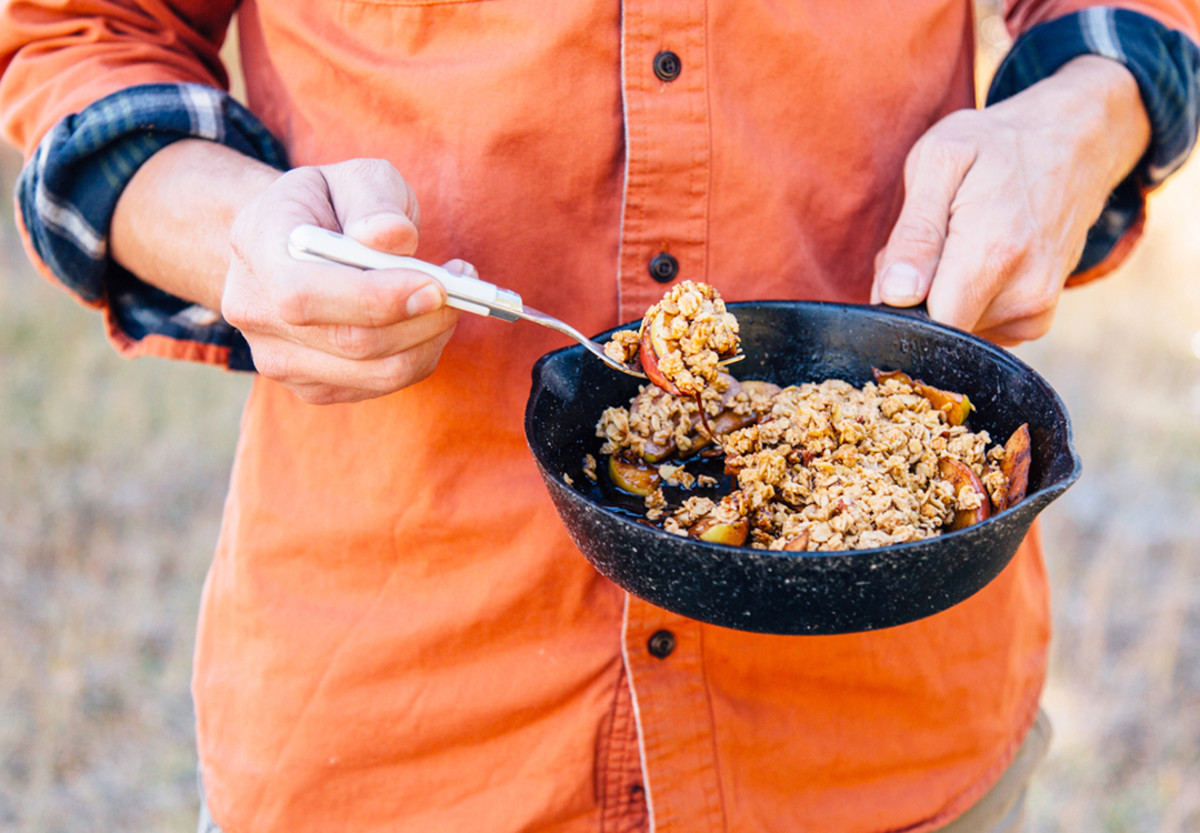
The car-camping foodies chronicle their adventures and recipes on the blog Fresh Off the Grid, elevating the whole idea of camp cuisine as they go.
And their tool of choice? You guessed it: the cast iron pan. Here, we asked the duo to educate us in camping’s most versatile cookware.
Cast Iron Is Nearly Impossible to Ruin
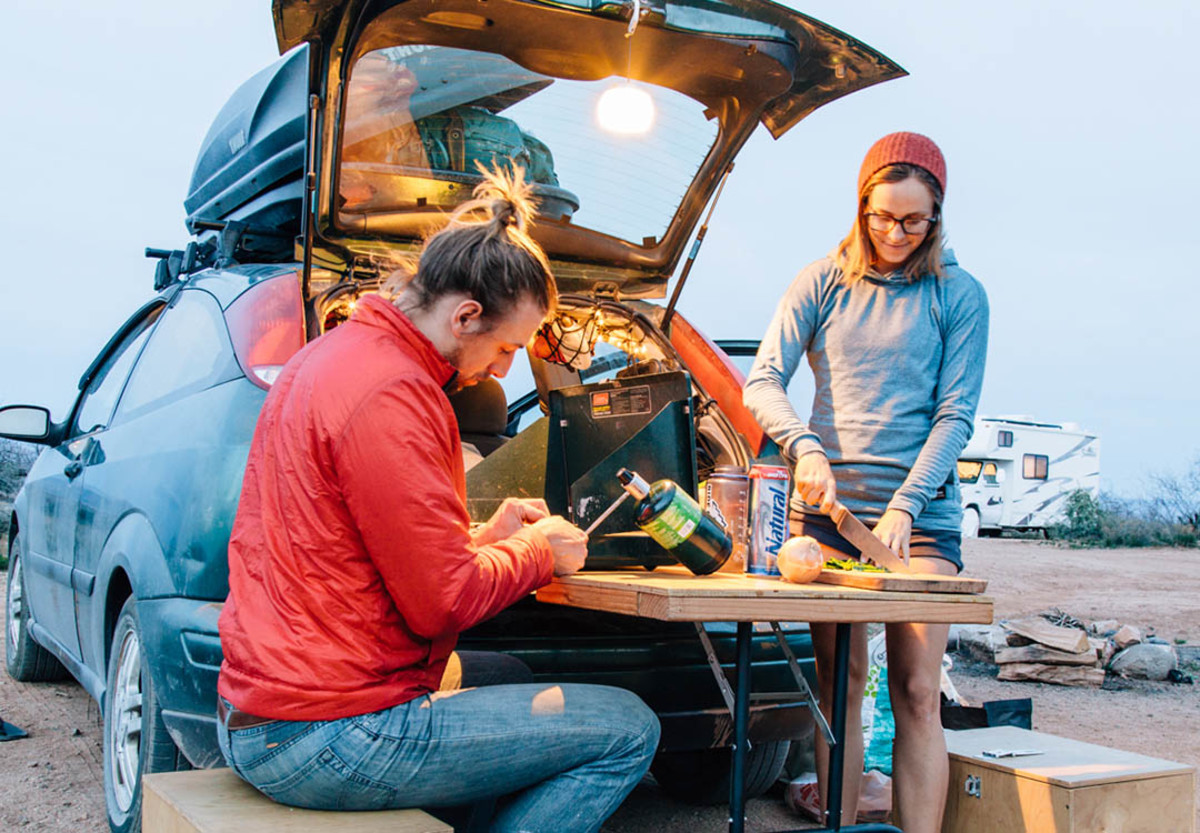
“Cast iron pans can be used on a camp stove or placed over an open flame,” explains van Vliet. “They can even be placed directly on top of hot embers or coals without damage.”
Unlike flimsier pots and pans, cast iron is virtually indestructible. Even after extensive misuse and neglect, cast iron can almost always be revived back to working conditions, van Vliet says.
It’s also naturally non-stick when properly cared for. While your eggs may not slide right off the pan, as with slippery Teflon-coated surfaces, cast iron is perfectly suited for most cooking circumstances.
Cast Iron Doesn’t Need to Be Babied
“There are a lot of myths surrounding cast iron cookware, which can be intimidating to first-time users,” the duo says.
“But the good news is most of them are false. Cast iron doesn’t need to be babied; the stuff is pretty resilient.”
No, the non-stick “seasoning” on your pan won’t flake off if you use a metal spatula. Yes, you can wash the pan with mild soap.
Cast Iron Does Have Hot Spots
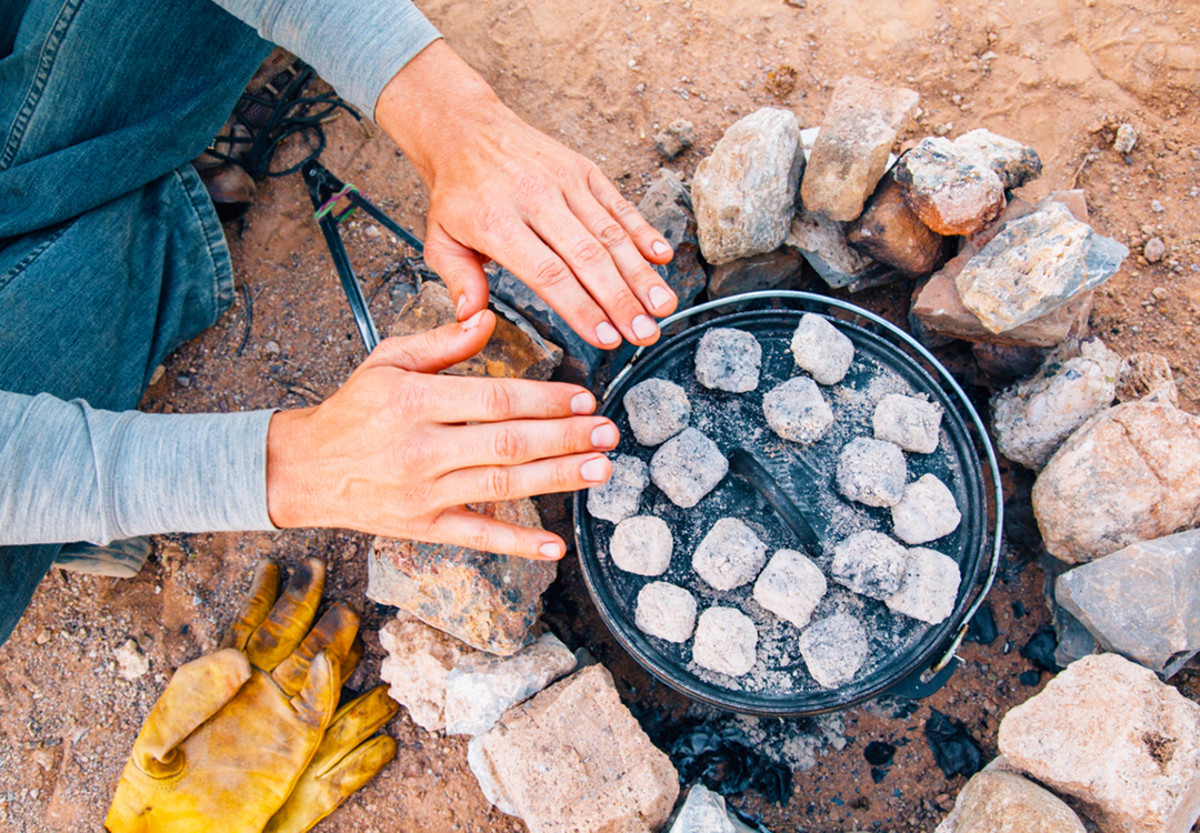
Many people claim that cast iron heats evenly, but that’s not entirely true.
“Cast iron is actually really bad at distributing heat, which means you will get hot spots on the pan directly above the heat source,” says van Vliet.
“But what it is really good at is retaining heat, so once you get it up to temperature, it will continue to stay hot for a long, long time. Unlike stainless steel, which is only cooking the food that comes in direct contact with the pan, cast iron radiates heat so well that it’s actually cooking food an inch or two above the surface.”
Try rotating the pan around on the burner while you’re warming it up to ensure all areas of the pan are well heated before you start cooking.
Seasoning Is Not as Complicated as It Sounds
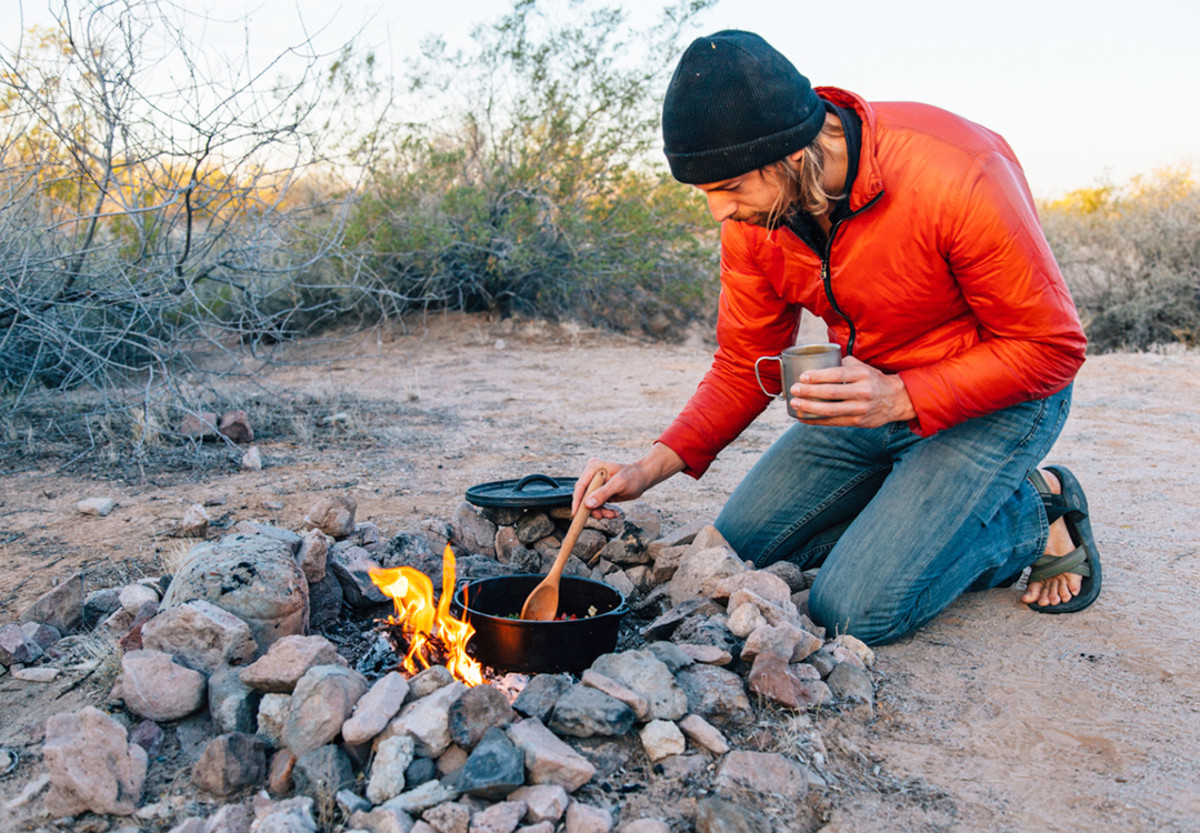
“Seasoning” is the term used to describe the non-stick surface that forms on a cast iron pan. According to van Vliet, when oil is heated in the pan, it polymerizes and adheres to the little grooves in the metal, creating that non-stick layer.
After the pan is heated, this oil isn’t really oil anymore; it’s more like a type of plastic.
“To season a pan in the field, all you need to do is evenly rub a small amount of neutral-flavored oil all over the cooking area of the pan, heat it up on a stovetop until the oil just starts to smoke, then turn off the heat and let it cool,” says van Vliet. “Wipe out any excess oil with a paper towel. That’s all there is to it!”
Don’t be afraid to wash your pan, either; polymerized oil isn’t oil, so it won’t wash right off. It’s actually bonded to the metal, so feel free to clean your pan with a mild soap. (Just don’t scrub it with steel wool and you’ll probably be alright.)
Cast Iron Can Cook It All
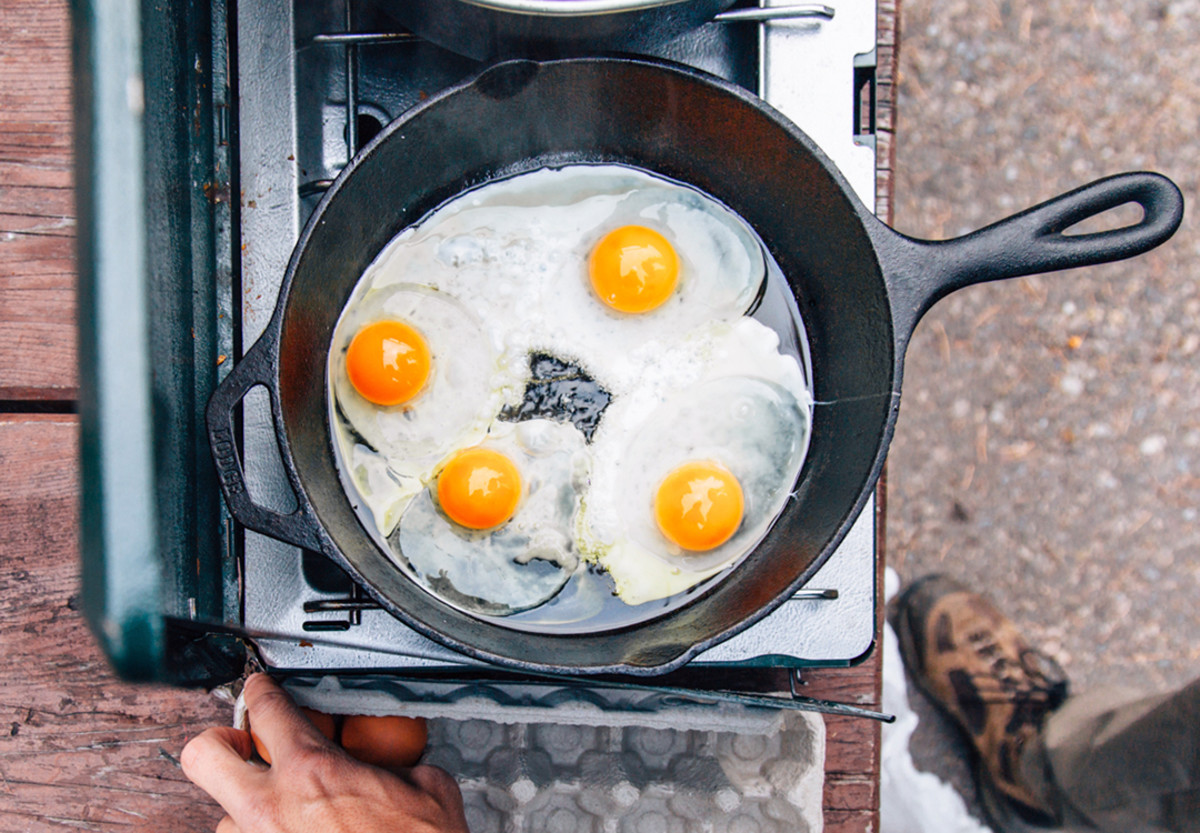
As long as McDuffie and van Vliet aren’t backpacking, it’s safe to say they are using cast iron. The couple has a small- and medium-sized skillet as well as a medium Dutch oven with a lid.
“We’ve cooked everything from lasagna to cornbread using our cast iron. We’ve also came up with an amazing one-pan beef stroganoff that uses a single cast-iron skillet,” says van Vliet.
“Because the pan radiates so much heat, it does a great job at cooking the steak, mushrooms and onions. Another favorite is potato hash. The pan does a remarkable job of cooking the potato all the way through (not just browning the bottoms). We usually combine this with a couple eggs that we cook sunny-side up.”
Recipe: Asparagus Pancetta Hash for Two
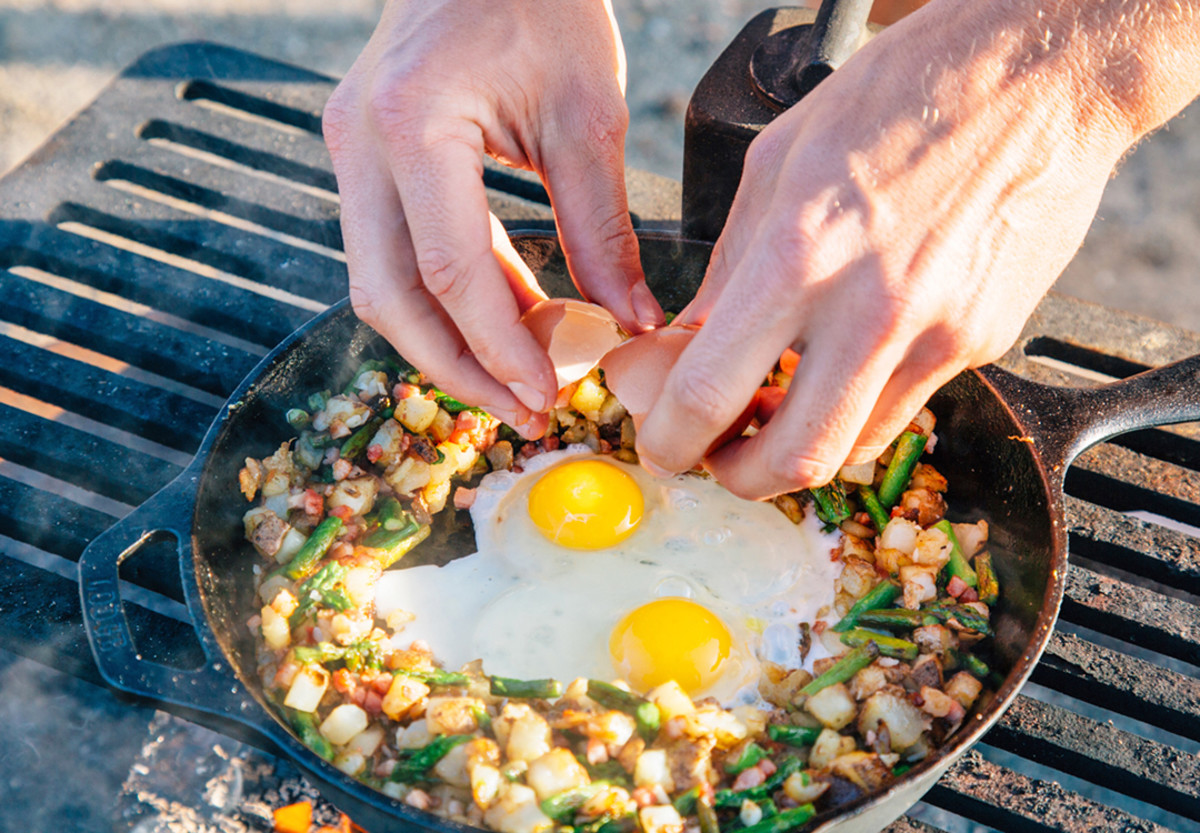
Ingredients
– 1 Tbsp. oil
– 1 medium potato, peeled if desired, cut into 1/4-in. dice
– 1 bunch asparagus, cut into 1-in. pieces
– 4 oz. pancetta (or breakfast meat of choice), diced
– 1 clove garlic, minced
– 1/4 tsp. sea salt, plus more to taste
– 2 eggs
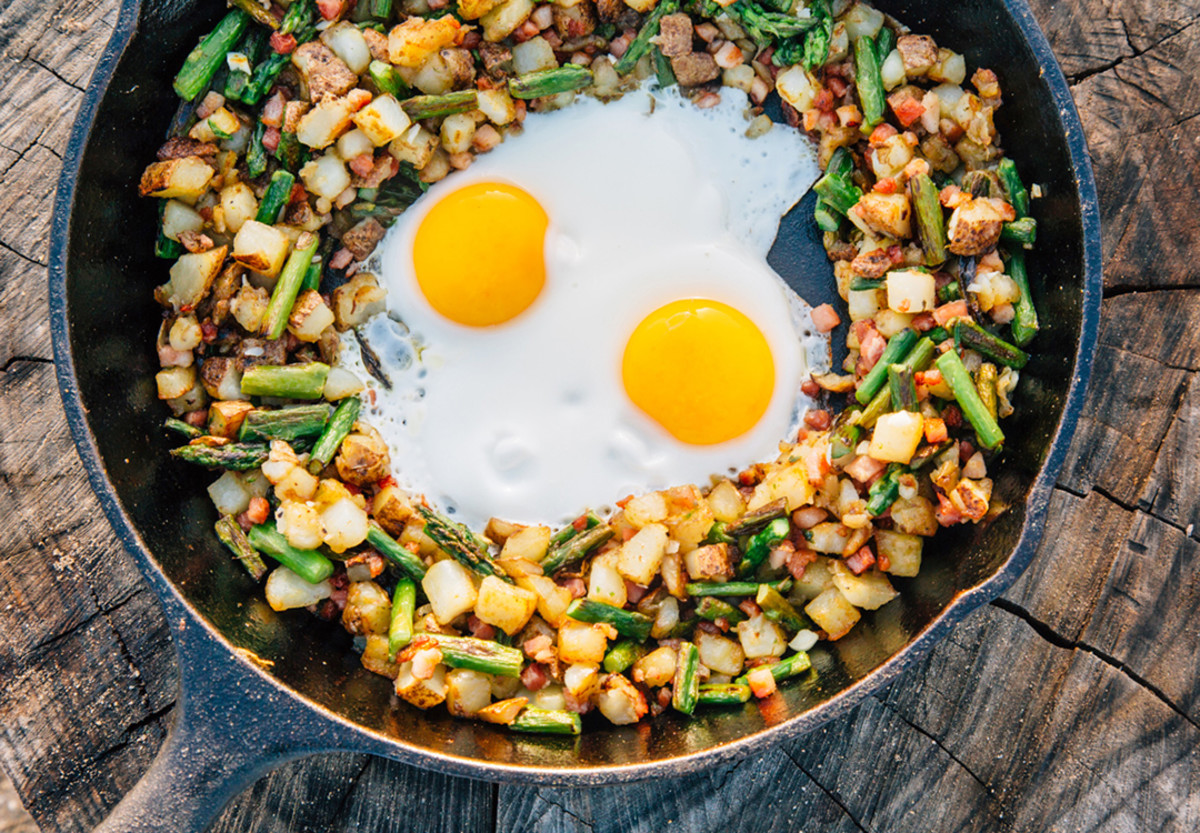
Cook the potatoes: Heat the oil in a cast iron skillet over medium heat on your stovetop or on a grate over your campfire. Once the oil is hot, add the potatoes in an even layer. Cook for about eight minutes, turning occasionally so that all sides have a chance to brown, until the potatoes are beginning to turn golden.
Cook the asparagus and pancetta: Add the asparagus, pancetta, garlic and sea salt to the skillet. Continue cooking an additional eight to 10 minutes, until the pancetta is crispy and the asparagus is cooked through and tender.
Fry the eggs: Push the hash to the sides to create a well in the middle of the skillet. Crack the eggs into the well and cook them to your desired doneness. (We cover the skillet and cook for three minutes to achieve a firm white and a runny yolk.)
Serve: Serve immediately, either in the skillet to share or divided between two plates.
from Men's Journal https://ift.tt/37R5bLj


0 comments